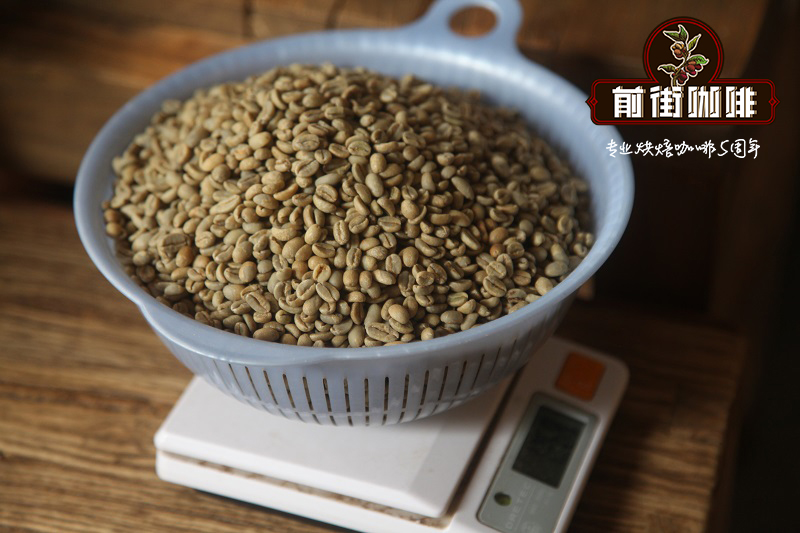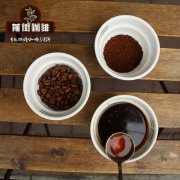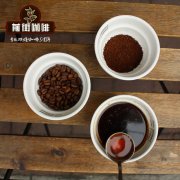Peruvian Coffee-La Flor Coffee Farm planting Story and profile? How to make Peruvian coffee?

Professional coffee knowledge exchange more coffee bean information please follow the coffee workshop (Wechat official account cafe_style)
Peruvian Coffee-La Flor Coffee Farm planting Story and profile? How to make Peruvian coffee?
La Flor del Zapote Farm is named after the beautiful trees in the high mountains of the Peruvian jungle. The farm is located between the villages of La Palma and Las Pirias, between the Chirinos district and the province of San Ignacio, Peru, and is 1700 meters above sea level. The coffee produced in this area is Strictly Hard Bean (SHB), which is famous for its high quality. All the crops grown on this farm are produced using only organic fertilizers, and families use the shade provided by surrounding fruit trees and wildflowers.
La Flor del Zapote is now 40 years old and is run by Rony Lavan Guerrero and his family of eight. Everyone on the farm works hard day after day, growing and harvesting high-quality coffee. The output is moderate, about 200-250 square meters per year, mainly managed by families, employing 5-7 local workers during the harvest season. The farm is located between the villages of La Palma and Las Pirias, the Chirinos district and the Peruvian province of Cajamarca. The community has about 2000 residents, and the children of its family attend La Palma School, which provides an eighth-grade education for about 180 students.
Coffee came to Peru in the mid-1700s and was probably introduced by Dutch immigrants. The Dutch brought Typica varieties, especially in old farms and micro-farms. The first coffee was grown in Chinchao,Huanuco, in the middle of Selva, and spread from there to the north (Cajamarca) and south (Cusco and Puno) of the country. Peru opened its first coffee shop in Lima in 1771 and began to export coffee in 1887.
Peru is a country with great potential, but for special reasons, it is difficult to find 87 + coffee in consuming countries. The potential is there: the country is the eighth largest coffee producer in the world, with a large number of farms ranging from 1600 to 1800 meters and above, mainly Typica and Bourbon; in theory, all these conditions should give us 88-90 + coffee. But this is not the case. High-end coffee in Peru is scarce because of the challenges it faces. Most farmers own only a few hectares of land and are located in remote areas. In many cases, their farm is a four-hour walk from the nearest town and an eight-hour drive from the nearest port. This means that coffee can be kept on the farm for an unnecessary long time after drying. In the dry season, the climatic conditions are often very humid, with precipitation. Without proper storage, such as GrainPro, coffee increases moisture and destroys the quality of the cup.
CENFROCAFE is one of Peru's most powerful cooperatives, both in terms of quantity and quality. They have made plans to increase production through organic fertilizers while keeping plants healthy, which is very useful during an outbreak of coffee leaf rust. CENFROCAFE produces about 120000 quintales (1 quintal = 100 lbs) coffee per year and is one of the leading cooperatives in the country. The average yield per hectare is about 22 quintales, which is high for organic production around the world. CENFRO recommends that its producers fertilize with Guano de Isla, phosphate rock and Ulexite to obtain these yields.
CENFROCAFE is also one of Peru's largest exporters in terms of quality. They are among the best in the national competition, with great miniature potential and excellent delivery capabilities as well as consistent complete containers.
Before this harvest, people may taste more than 90 kinds of delicious coffee from southern Ecuador, but coffee production in northern Peru is more than 86%, coffee growing areas are adjacent to each other, and the conditions are very similar. The producers of CENFRO are heirloom Typica and Bourbon, 1600 + and 1800 + above sea level. We are very satisfied with the quality of microelectronics this year.
This community area is produced by two small coffee growers living near the town of La Flor del Norte in the Huabal district of Peru. With a total population of only more than 200 people and only 45 families, it is obvious that this town is the extreme of the countryside. Nevertheless, climate and altitude are ideal for growing special coffee. In fact, one of the producers who contributed to the team was Juan Heredia Sanchez, the No. 1 winner of the Peruvian Excellence Cup in 2017, who scored 92.25 points as judged by an international jury.
Both farmers belong to the producer organization COOPAGRO, which was made up of 279 farmers from various villages in 2016, all in the Huabal district. The two farmers-like many people in the area-grew up in coffee and learned it from their parents and grandparents. La Flor,El Jardin and LaMonta ñ a's contribution farms have been cultivated for more than 50 years, and each producer gives their farm a name to commemorate the trees or natural features of the farm, which stands out in the wilderness. The size of the package is very small; however, families live on their own and their families' coffee and rely almost entirely on coffee to earn their income. However, with the emergence of a specialty coffee market, producers in the region are seeking to expand productivity and quality.
A major example is that Juan recently won the first prize in the COE Cup in 2017. Juan has loved working on a farm since he was a child, but he never thought his coffee would become the first Peruvian coffee in history to win the COE. Juan says he is not special and that all his neighbors produce special coffee. According to him, the key to this development is hard work and cooperation-mainly through the producers' association COOPAGRO.
Before he joined COOPERAGRO, he only sold coffee locally in Cajamarca. However, the support and encouragement he received from the cooperative made him believe that he could do more and make more money from his work. This year and in the future, Juan, with the support of COOPERAGRO, plans to plant an experimental and test plot to improve soil fertility and plant additional shade trees. He will continue to increase his production through the training promoted by the group.
Juan and all manufacturers working with COOPERAGRO are encouraged to replace Catimor with high-quality varieties such as Caturra,Pache,Typica and Bourbon. Although these are more vulnerable to coffee leaf rust, cooperatives are working to train producers to use purely organic methods to combat the plague. Most importantly, proper fertilization is a priority.
All producer members have been trained in refurbishment techniques and each has a nursery they grow. Pruning is carried out at the end of each harvest to ensure productivity and plant health. Plantations are regularly evaluated by internal evaluators who advise on best practices and help troubleshoot producers when they encounter problems.
Origin: Peru
Area: Kahamaka
Farm: 2000 small farmers
Altitude: 1200-2200 masl
PROC . Method: wash and dry
Flavor: juicy acidity, chocolate and cherry flavors, smooth taste.
Qianjie recommendation: how to brew Peruvian La Flor coffee?
Filter cup: Hario V60
Water temperature: 88 degrees
Degree of grinding: small Fuji degree of grinding 4
Cooking methods: the ratio of water to powder is 1:15, 15g powder, the first injection of 25g water, 25 s steaming, the second injection to 120g water cut off, waiting for the powder bed water to half and then water injection, slow water injection until 225g water, extraction time about 2:00
Analysis: using three-stage brewing to clarify the flavor of the front, middle and back of the coffee.
Important Notice :
前街咖啡 FrontStreet Coffee has moved to new addredd:
FrontStreet Coffee Address: 315,Donghua East Road,GuangZhou
Tel:020 38364473
- Prev

El Salvador [bourbon] the flavor of coffee beans from Finca Bella Vista coffee farm? How
Professional coffee knowledge exchange more coffee bean information please follow the coffee workshop (Wechat official account cafe_style) El Salvador [bourbon] Finca Bella Vista coffee farm coffee bean flavor? How do you cook Salvadoran coffee beans? Fernando Lima is the manager of the Cuzcachapa Cooperative in the town of Santa Ana at the foot of the Santa Ana Mountains. Fernando spent many years
- Next

Peruvian Coffee-El Cerro Coffee Farm [Kaddura] what is the flavor and characteristics of coffee beans? Peru E
Professional coffee knowledge exchange more coffee bean information please follow coffee workshop (Wechat official account cafe_style) Peruvian Coffee-El Cerro Coffee Farmer
Related
- Detailed explanation of Jadeite planting Land in Panamanian Jadeite Manor introduction to the grading system of Jadeite competitive bidding, Red bid, Green bid and Rose Summer
- Story of Coffee planting in Brenka region of Costa Rica Stonehenge Manor anaerobic heavy honey treatment of flavor mouth
- What's on the barrel of Blue Mountain Coffee beans?
- Can American coffee also pull flowers? How to use hot American style to pull out a good-looking pattern?
- Can you make a cold extract with coffee beans? What is the right proportion for cold-extracted coffee formula?
- Indonesian PWN Gold Mandrine Coffee Origin Features Flavor How to Chong? Mandolin coffee is American.
- A brief introduction to the flavor characteristics of Brazilian yellow bourbon coffee beans
- What is the effect of different water quality on the flavor of cold-extracted coffee? What kind of water is best for brewing coffee?
- Why do you think of Rose Summer whenever you mention Panamanian coffee?
- Introduction to the characteristics of authentic blue mountain coffee bean producing areas? What is the CIB Coffee Authority in Jamaica?

